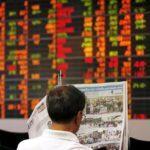The Central Bank on Thursday revised its year-end inflation forecast upwards for both 2022 and 2023 while keeping its medium-term target at 5%.
Annual inflation is projected to hit 23.2% in Turkiye by the end of 2022, revised up from 11.8% in the previous report, Central Bank Governor Sahap Kavcioglu told a meeting held to release the bank’s first quarterly inflation report this year.
The upward revision was led by TRY-denominated import prices, food inflation and rise in unit labor cost, he explained.
The annual inflation forecast for end-2023 was also raised to 8.2% from 7%, Kavcioglu said.
He stressed that bank’s estimate for food prices was revised up with cumulative effects of the ongoing rises in international food prices taken into account, especially the exchange rate developments and the developments in agricultural drought.
Food prices are forecast to surge 24.2% year-on-year in 2022 and 10% in 2023, Kavcioglu said.
According to the latest data from the Turkish Statistical Institute (TurkStat), Turkey’s annual inflation rate was 36.08% in 2021.
Higher-than-expected data was driven by distorted pricing behavior due to unhealthy price formations in the foreign exchange market, supply side factors such as the rise in global food and agricultural commodity prices, supply constraints, and demand developments, the governor said.
The bank expects disinflation process to begin on the back of measures taken for sustainable price and financial stability along with the decline in inflation owing to the base effect.
The Turkish government, in its medium-term economic program, had said annual inflation was projected to hit 9.8% by the end of 2021.
Kavcioglu announced the Liraization strategy
Kavcioglu explained the Liraization strategy at the meeting. The policy framework of the Liraization strategy as follows:
- Reshaping price stability on a sustainable basis is possible by making the Turkish lira the essential element of the financial system.
- The Liraization strategy is created with a holistic approach that focuses on the use of the Turkish lira in the system, through new financial products, collateral diversification and liquidity management practices.
- Within the scope of the Liraization srategy, the CBRT has implemented a set of practices.
- It is important that loans and monetary aggregates grow at a rate consistent with sustainable price stability and that the weight of the Turkish lira among these aggregates is increased.
- The focus of all implementations to be implemented in the near, medium and long term will be to ensure the Liraization of the financial system in order to reshape price stability on a sustainable basis.










